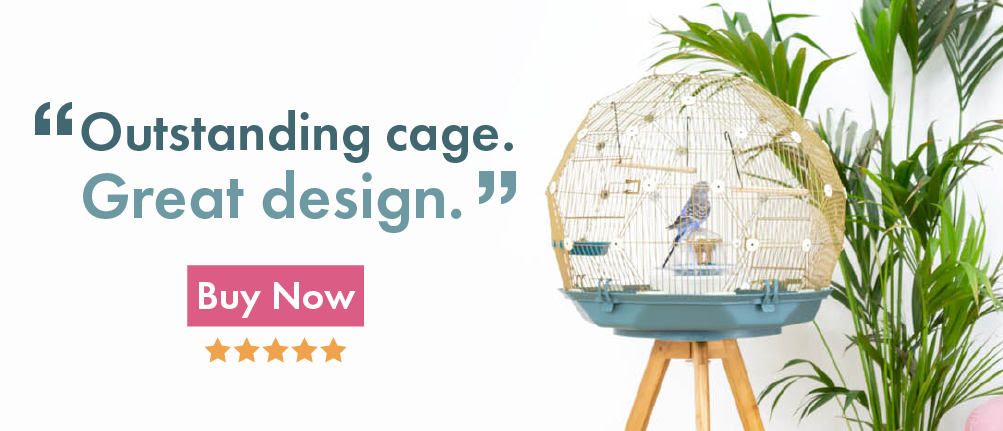Food can be placed on the floor of the cage in a dish, tray or bowl. A feeder secured to the bars is the more usual arrangement in a smaller cage, with a mixture of feeding stations in a larger enclosure.
Parakeet Food Dish
The feeding bowl needs large surface area – parakeets will only eat the seed they can see, and are unable to rummage through deep bowls to find the uneaten stuff beneath. A centrally-placed hopper is ideal, enabling several birds to feed there at once. Remember it needs to be easily removed from the cage at least once a day. Avoid placing the food bowls beneath perches, to prevent your parakeets from pooping in the food.

You can have a variety of food bowls and feeding stations in a larger aviary
Parakeet Seed Feeders
The feeding dish needs to be secure, so that it can't be tipped or dislodged. It also needs to be easy to clean and easy to get in and out of the cage. For smaller cages, you can buy feeder-protectors that clip above the food bowls to prevent them getting soiled with bird droppings.
Many feeders are simple free-standing or attachable bowls. A seed hopper is another variation, a simple way of enabling several birds to feed at the same station at the same time. Hoppers are the best way to feed pellet food. With seeds, you’ll need to blow the husks from the hopper to make sure your birds have constant access to the fresh stuff.



Comments
Yvette, 18 May 2020
Hi, WARNING to any other novice budgie owner like myself, please be aware of buying individual large seeders for only one budgie, thinking I was giving my budgie the freedom of eating as and when he wanted, plus saving me the daily chore of emptying his feeder each day, as it advertised the empty shucks falling through the grid, resulted in him becoming overweight, which in turn has left him with LIVER damage, thankfully due to this forum and advice given, being told that veterinary advice was needed he is now on the road to recovery.
Katherine, 10 December 2019
The feeding dishes in the cages have an inner bit to them. Another half a plastic part that goes inside the normal part. Call me stupid if you want but I can't work out why this is so.
Christine, 22 September 2019
I love budgies and have been involved with them all my life. We had one for 12 1/2 years which died in my hand. He lived all his life with only one kidney. Then when my husband died, I got one which was my little saviour. I had him for 5 years and was devastated when he died. He had some sort of virus and was on antibiotics for some months. He also died in my hand and I was distraught. He was an excellent talker , and I immediately got another one 2 days later. I didn't think I could love him like I loved Mickie, but I was wrong. He looks like Mickie, but he is so comical, and he is an even better talker . My only problem is, that he seems to eat a lot. He eats seed and I give him carrot ,parsley, and different fruit . Should I worry about him eating a lot. He sometimes seems to take a long time to digest it. Your comments please.
Kayla, 3 September 2019
I gave a parakeet that keep chewing on the bowl what can I do or give him to help him stop or is it natural?
Prajakta, 25 June 2019
I just got 2 budgies recently, a male and a female. The female is kind of the dominant one between the two I feel. Whenever my male budgie is eating/drinking , most of the time she comes and shoos him away to eat the food herself. Sometimes they do share and eat together but that not very often. Should I keep separate food and water dishes for them?